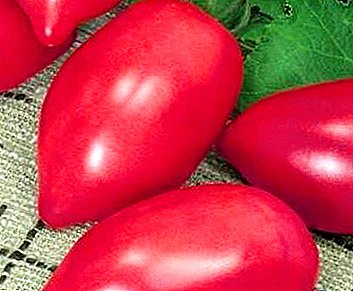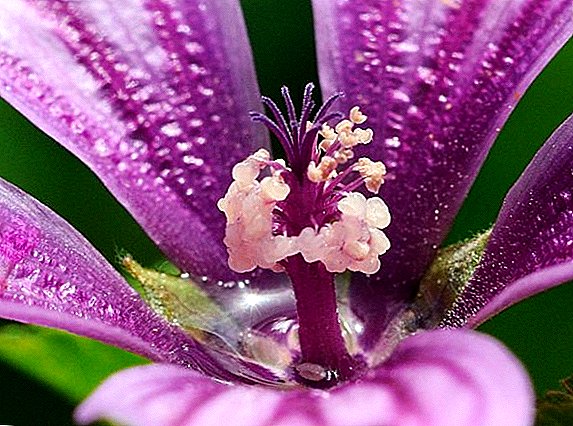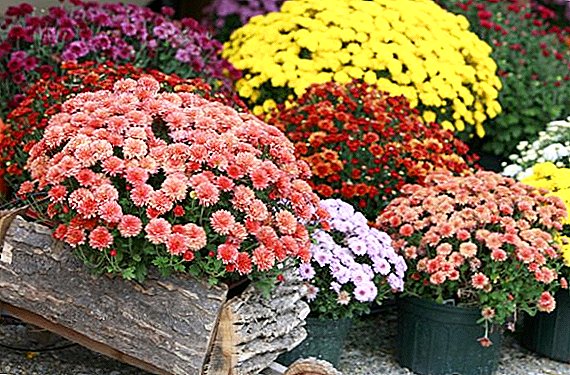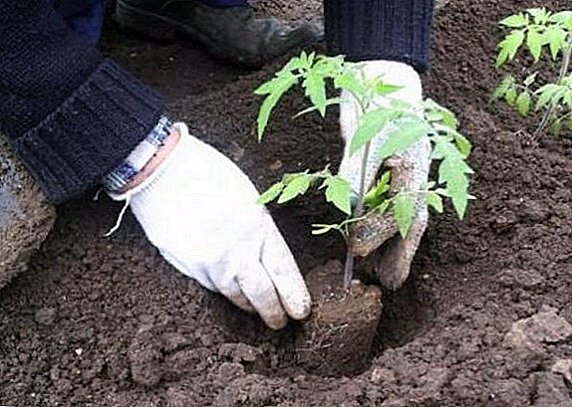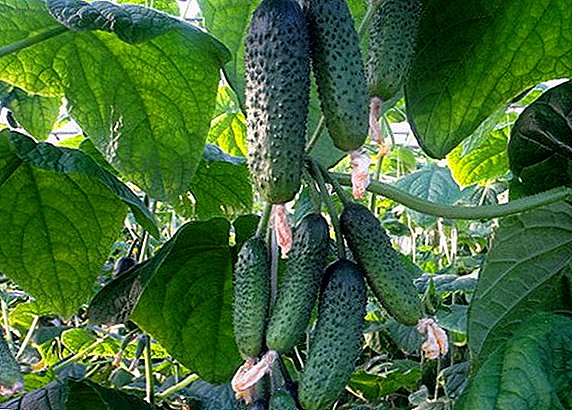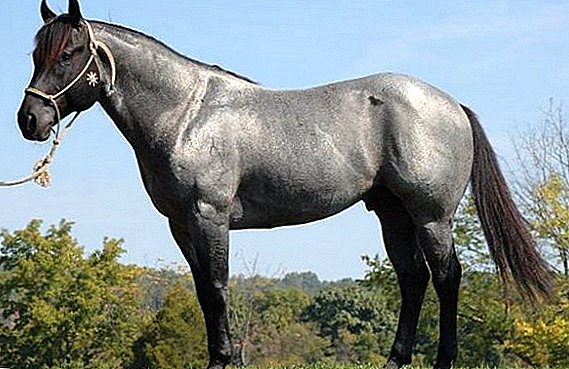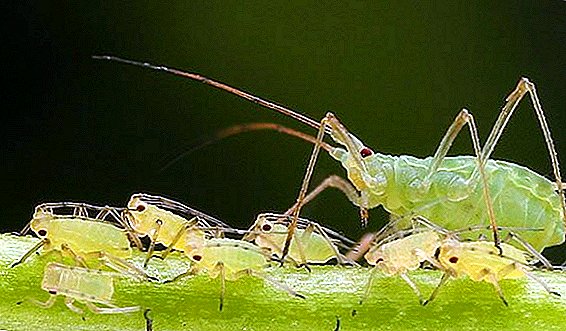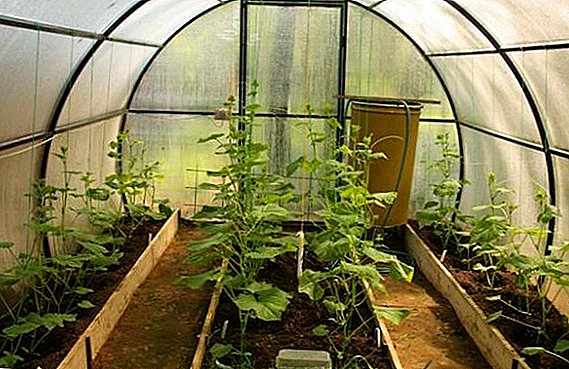 The climate of our regions is such that far from all territories manage to warm up by the time of planting of seedlings in open ground.
The climate of our regions is such that far from all territories manage to warm up by the time of planting of seedlings in open ground.
A greenhouse comes to the aid of gardeners, but there are certain temperature requirements even for greenhouse land. In order to speed up the process of warming the ground in a polycarbonate greenhouse and to protect the seedlings from extreme temperature fluctuations, it is appropriate to equip warm beds from autumn. Ways to do this, we consider in this article.
Benefits
The main advantage of warm beds is accelerated heating of the soil, which makes it possible not only to harvest early, but also to stretch it as much as possible.
The greenhouse itself provides for the early planting of seedlings in May, and the presence of warm beds in it will allow this process to take place even earlier - from mid-April. Also, a warm bed in a polycarbonate greenhouse allows you to extend the fruiting period until mid-October.
Learn how to independently make a vertical bed and a bed-pyramid for strawberries.
Location and light
Heat is warm, but the seedlings still need sufficient sunlight for development. Polycarbonate greenhouse has a good diffusing light effect, so do not be afraid that some side of the greenhouse will get less.  And yet, agronomists advise to have greenhouses in the area from north to south - so the plants growing in rows, get sunlight as much as possible and for a long time.
And yet, agronomists advise to have greenhouses in the area from north to south - so the plants growing in rows, get sunlight as much as possible and for a long time.
Did you know? In Iceland, greenhouses are built on geysers: natural pools with hot water provide the necessary temperature for seedling shoots.
Sizes of greenhouse beds
If the length of the beds in the greenhouse is limited to the length of the latter, and it can be different for everyone, then the height of the warm bed is almost always standard: 50-60 cm.
Regardless of whether you dig a trench or make a high bulk row, this figure remains the same as for a greenhouse with organic and artificially heated. 
Heating methods
There are several ways to make a warm bed: some of them are financially more expensive, others do not cost anything but their own labor costs.
We use organic
The easiest and affordable for all gardeners to organize a warm walkway in a greenhouse is to use what nature itself gives us. A bed of organic materials is prepared in the fall: it is rather multi-layered, but already in spring it gives the necessary seedlings warmth.
Warm organic track consists of the following layers:
- The bottom of the beds is covered with thick branches of trees and shrubs, about 5 cm in diameter. Use branches only from deciduous trees, coniferous trees produce resin, which slows down the process of decomposition.The thickness of the layer is 20-25 cm;
- Next line a layer of thinner branches and dry grass. These two layers form a pillow that will decompose for 2-3 years;
- To accelerate the decay of the previous layers, throw branches with a thin layer of green grass;
- The next layer is dry foliage. At this stage, the bed is already about half full;
- On top of these layers, you can scatter a thin layer of earth and introduce a preparation containing microorganisms that decompose organics in an enzymatic way, for example, "Vostok M-1" or "Shine 3";
- Then a layer of green cut grass is laid again;
- The last organic layer is dry leaves;
- Now everything is filled with a layer of earth, 7-10 cm thick, where the seedlings will be planted;
- If the organic matter was sufficiently dry, water it abundantly.
Important! If you are not sure that the top layer of soil is enough for the development of the roots of seedlings, then while lining the layers of warm beds, make holes for seedlings, after about 50 cm each. The bottom of the hole should be at the level of the dry foliage layer.
Hot water pipes
This is a more costly, but highly efficient way to make warm beds with your own hands. Hot-water pipes from the boiler are fed through the pipes laid under the greenhouse itself; it returns to it already cooled. Thus, not only the soil is heated in the greenhouse, but also the air.
Important! For this purpose it is better to use a gas boiler, a pump and plastic pipes.
Electrical wire
With this method, an electrical cable with insulation, the heating of which can be regulated, is laid under the ground at a level of 40-50 cm.
The system is adjusted so that when the soil heats up to 25 ° C, it automatically turns off. For measurement accuracy it is also necessary to install a thermostat. 
Features of planting seedlings
Seedlings in warm organic paths are planted about a month earlier than in a conventional greenhouse, and care and watering require the same. This bed is about 3-4 years old, and in each of them it is advised to plant certain cultures.
In the first year after the organization of such a bed, when it is saturated with carbon dioxide and nutrients, it is worth planting cucumbers and pumpkin crops.
You will probably be interested in reading about how to choose polycarbonate for your greenhouse.In the following years, when natural nutrition decreases, it is necessary to switch to cabbage, tomatoes, peppers, and carrots, and when the soil is almost depleted, greens and peas grow well on it.
In the greenhouses with artificial heating over time is to pour the land and fertilizer, and they can serve as much as you need.
 A warm bed is undoubtedly an excellent solution for sites in regions with cold climates. There are many options for how to equip it, it remains only to decide which one suits you.
A warm bed is undoubtedly an excellent solution for sites in regions with cold climates. There are many options for how to equip it, it remains only to decide which one suits you.
Did you know? "Crystal Palace" - construction of the 14th century in London (a place where entertainment events and royal receptions were held) - originally designed as a huge greenhouse.




